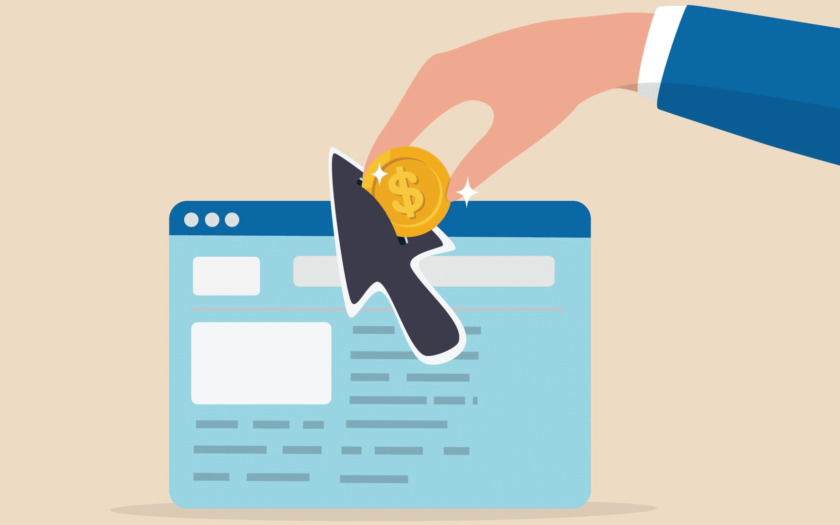[ad_1]
Inflation continues to weigh heavily on consumers and businesses alike. Retailers nationwide face squeezed profit margins due to rising wages and material costs.
Businesses must invest in advertising to stay competitive, yet these expenses are also climbing. Over the past three quarters of 2024, Google reports that cost-per-click (CPC) rates have risen by 4 to 6% year over year, adding to the financial strain.
Ordinarily, businesses might respond to rising CPC costs by increasing prices. However, with inflation-weary consumers already feeling the pinch, price hikes could push customers away.
What options remain for businesses? Fortunately, there’s a smart solution: implementing CPC caps. This strategy allows businesses to offset rising ad costs without burdening consumers.
Analyzing the mechanics of Google’s CPC rates
PPC advertisers using Google’s smart bidding technology leave themselves at the mercy of Google’s AI function. Here’s an example of how that works:
Imagine a business targeting a four-times return-on-ad-spend (ROAS) with an average order value (AOV) of $200.
If Google’s “all-knowing” AI is 100% certain that a consumer will convert, the maximum price they can charge for that click is $50.
While that may seem like a lot for a click, over time, Google has learned the businesses’ habits and, therefore, knows what its clicks are worth, thus charging them that amount.
Fortunately, Google’s AI isn’t actually all-knowing (yet). So, we should ask ourselves not how much the click is worth but what it costs to win high-value clicks.
If I can enter the same auction and win the same click for just $20, that’s an improvement. While I aim for a four-times ROAS at $20, I achieve a ten-times rate of return.
This reveals that Google’s overconfidence can sometimes lead to extraordinarily high click prices, which don’t align with business objectives, as seen in this example of a $648.94 click without a conversion:
For further context, before implementing CPC caps, I analyzed several clients’ generic (non-brand) campaigns.
The data consistently showed higher returns in each case when CPC rates were at the lower end of the spectrum. This trend underscores the potential benefits of setting CPC caps to optimize campaign performance.
The analysis showed that while the “waste” for some clients was relatively low (less than half a percent), some clients were “wasting” considerable portions of their budgets at returns well below the average.
Note that some paid search experts object to this kind of analysis. They argue that cutting the $1,500 from Client 5 on clicks above $2.50 won’t help performance because there is nowhere else for that $1,500 to go.
Fortunately, we have evidence that this isn’t the case.
In the above example of a generic search, the client set a cap of $10. This eliminated an admittedly small but wasteful portion of the spend. Even better, overall campaign performance improved.
Other factors may have contributed to improving the campaign’s performance, but I have seen this happen enough times to be confident in recommending clients to at least try a test.
Keep in mind that during the test, you might miss out on a small percentage of high-value clicks. If this happens, you can simply revert to your original settings.
However, the potential upside is that you eliminate clicks you’re being overcharged for and improve your ROAS for the foreseeable future.
The one caveat is that CPCs and caps perform differently around holidays and other tent poles, so be careful not to set the caps too low.
Dig deeper: There is no ‘best’ Google Ads bidding strategy, study finds
Get the newsletter search marketers rely on.
Implementing CPC caps
To run the test yourself, start by building a report like this with a selected long date range. (I’ve filtered clicks here to include >0.)
Next, download the report to Excel and in Excel, create a CPC column rounded to the nearest cent.
To create your distribution buckets, use a formula like the one below. This formula will match the CPC within a range of upper and lower bounds.
To calculate ROAS, use the Fields, Items & Sets button to create a calculated field as shown.
Then, pivot the table using fields similar to those in the image below.
The result should yield a data table like this, which can help you determine whether meaningful spending is dragging down your performance.
Finally, implement a maximum CPC within your portfolio bid strategy in Google Ads.
Run the configuration for a point-of-purchase (POP) table to see if your performance has improved. Hopefully, you’ll see savings of as much as 5% of your spend.
Working within Google Ads requires knowing its mechanics and tactics, like implementing CPC caps to optimize and improve an account. Moreover, it can ensure you get the most out of every ad dollar you invest.
Dig deeper: Branded keywords: How Google Ads drives up CPCs
Contributing authors are invited to create content for Search Engine Land and are chosen for their expertise and contribution to the search community. Our contributors work under the oversight of the editorial staff and contributions are checked for quality and relevance to our readers. The opinions they express are their own.
[ad_2]
